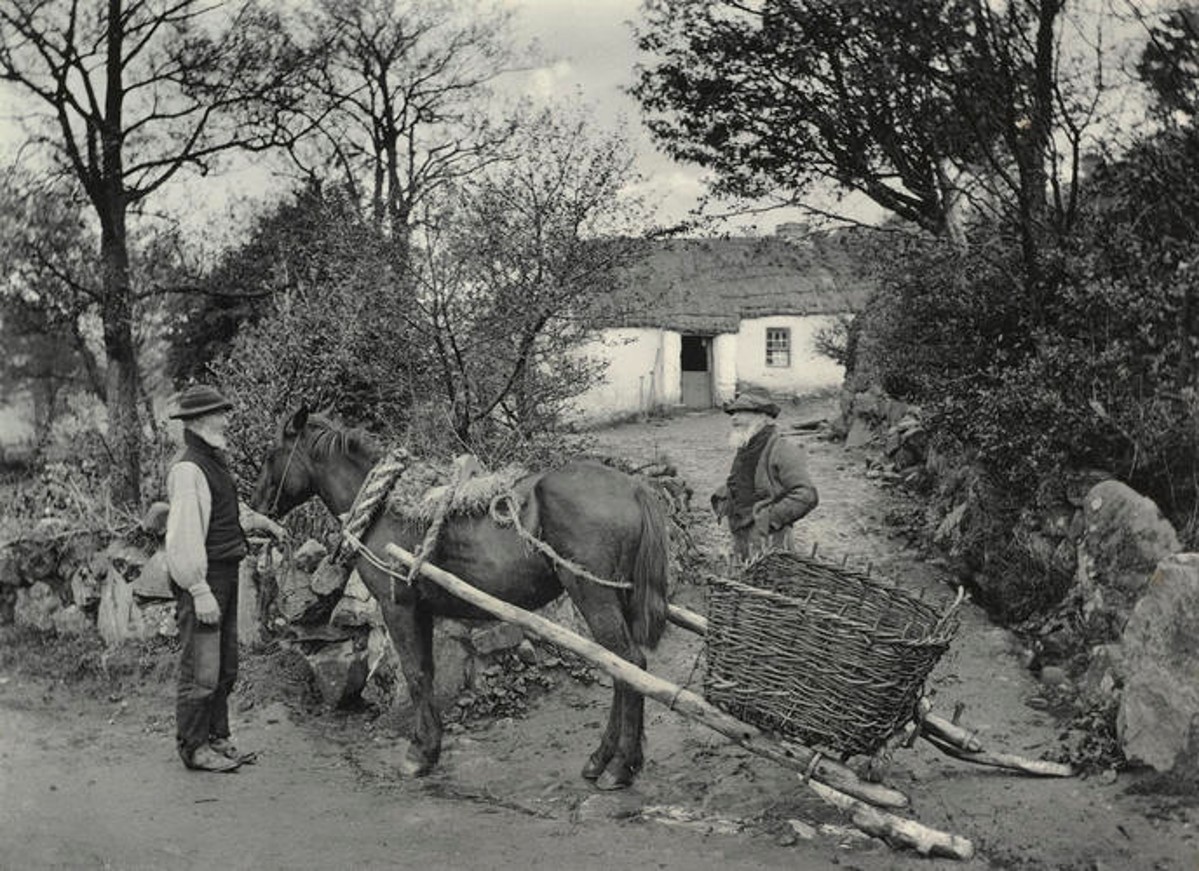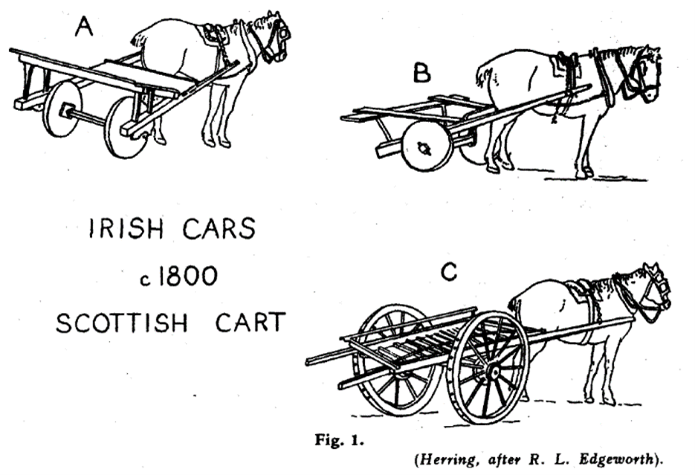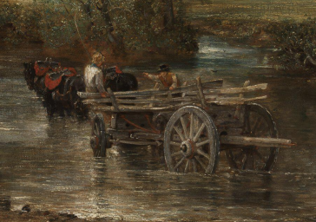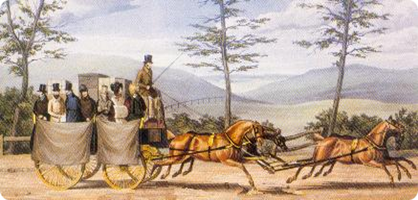The Slide Car

Some readers may be surprised to learn that the widespread adoption of wheeled vehicles came late to Ireland; among the poor at least, before 1800, the predominant means of transporting materials was the slide car – little more than a large wicker basket mounted on two poles dragging on the ground. Their use in the more impoverished areas of Ireland even persisted into the early 1900s.

Until the introduction of the Scottish cart in the early 1800, initially in (and later spreading from) coastal areas of Co Antrim, almost all Irish farm carts had solid wheels.
Even when wheeled transport became much more common after 1800, Irish farm carts were still much lighter, both in construction and carrying capacity, than their English equivalents; this was a major factor in already good local roads remaining good.

Irish road surfaces lasted much longer than in England. Heavy wagons with huge wheels, such as the one depicted in John Constable’s 1821 painting ‘The Haywain’, were very uncommon.
John Carr (1806) gives approximate unladen weights of two-wheeled Irish cars as a mere ~130kg, and four-wheeled English wagons as nearly 3,000kg – over 10 times the weight per axle. Road damage increases with the fourth power of axle weight, so some English wagons caused over 1,000 times the road damage!
Stagecoach Travel
When the first Belfast-Dublin stagecoach service started in 1740, the journey took two days in summer, and three in winter. With the improvements in roads, by about 1850, the peak of scheduled stagecoach travel in Ireland, the journey could be done in a single day.
In the late 1790s, the Northern Mail Coach Company (props. Anderson & Greers) ran a weekly freight service in both directions between Dublin and Belfast via Newry. Much more sedate than the passenger stagecoach service, it took a full five days.
As roads steadily improved, decade by decade, the Belfast Commercial Chronicle was able to report that on 7th January 1882? a coach made the journey of roughly 100 miles from Dublin to Belfast in a time of just 12½ hours – a surprisingly short time given that it was the depth of winter and required many changes of horses.
Charles Bianconi
Charles (originally Carlo) Bianconi was born in Italy and arrived in Ireland in 1802 aged just 16. In 1815 he launched his first coach service in Clonmel; it later expanded to cover most of Ireland. Bianconi’s vehicles were not enclosed, but simply an evolution of the traditional jaunting car in which passengers sat in the open air facing sideways. The largest of these was the ‘long car’ or ‘long Bian’ which carried up to 19 passengers and was pulled by four horses.

These remained in service until well into the 20th century. After the coming of the railways, Bianconi offered connecting services from many railway stations.